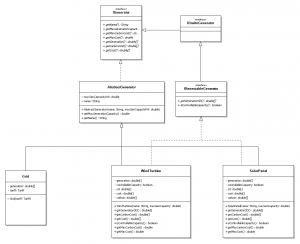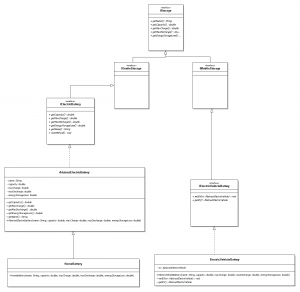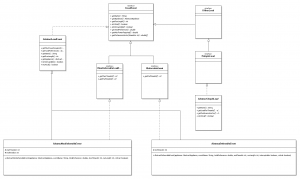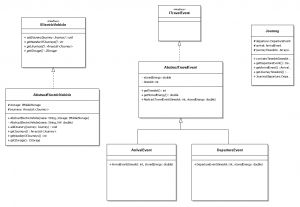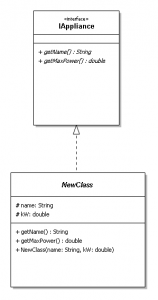The following UML class diagrams illustrate some parts of the Smart Home Framework (SHF) to quickly give you a high-level idea of its architecture. Detailed UML Class diagrams (and other types of diagrams) can be automatically generated with a UML-Java compatible tool. Please see click here to view our paper (currently submitted to AAAI 2013 Late Breaking Track) that describes these packages.
Note: The overall collection of below diagrams can be downloaded here. You will need NClass (a free and open-source UML Modelling tool) , which can be downloaded here, to view it.
Generation:
The SHF supports both onsite (e.g., renewable generation such as solar panels, or non-renewable generation such as micro-CHP units) and offsite (i.e., the electricity grid) generation. The following class diagrams shows the basic structure of this package.
Storage:
The SHF supports onsite (e.g., electric batteries in homes) and mobile (e.g., electric battery in an electric vehicle) storage.
Load Events:
The SHF describes appliance usage in terms of Load Events. It provides a rich set of load types to model (i) deferrable and non-deferrable loads (ii) interruptible and noninterruptible (iii) critical load (loads with highest priority) (iv) base load (e.g., the fridge) (iv) or a combination of these (e.g. a deferrable-interruptible-critical event). A load event has certain attributes depending on its type. For example, a non-deferrable load type has start and end time attributes to describe its time-span. In addition, the SHF also supports a simple load type which provides a simple way to model load requirements in an appliance-independent manner. This load type is useful when the focus is on the general load requirements, regardless of the appliances.
Electric Vehicle:
The SHF contains classes that support modelling of electric vehicle (EVs). It also provides classes to described EV usage (e.g., travel events, journeys) and its attributes (e.g., storage).
Appliances:
A smart home can contain multiple appliances as described by the following diagram. Appliance usage is described in terms of Load Events (see above).
